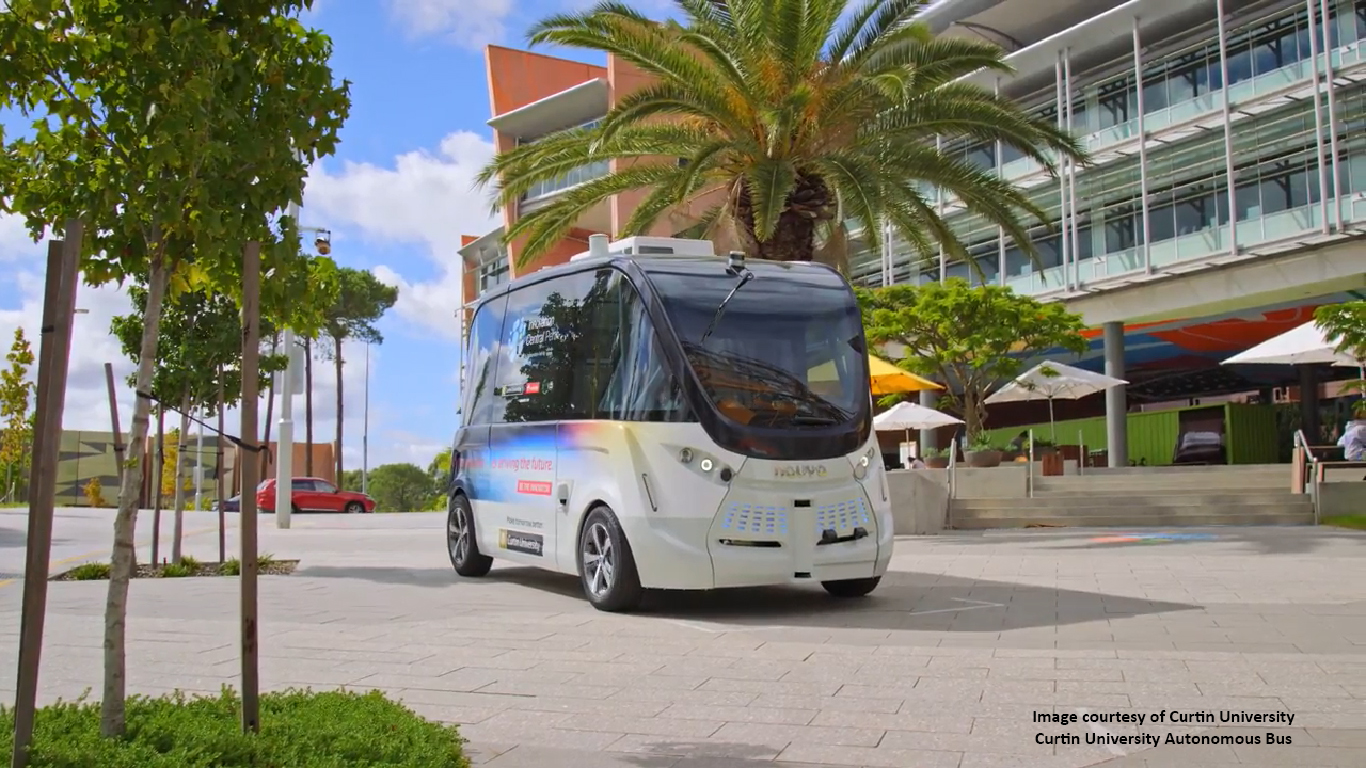
1.52 Tech-Enabled Transport: Informing the Transition to Technology Enabled Transport Vehicles and Infrastructure

Project Number
1.52Round
Round 5Date
April 2017 - September 2018Research Team

Chair, Project Steering Group
Dr Ken Michael AC
FIEAust FTSE

Project Manager
Dr Charlie Hargroves
BE (Civil), PhD
Curtin University
charlie.hargroves@curtin.edu.au
Documents for Downloading
Videos
Full Video – Tech-enabled Transport: Informing the Transition to Technology Enabled Transport Vehicles and Infrastructure, Nov 2018 (7:42)
Project Summary – Tech-enabled Transport: Informing the Transition to Technology Enabled Transport Vehicles and Infrastructure, Nov 2018 (4:10)
Presentations
Overview: Tech-Enabled Transport: Informing the Transition to Technology Enabled Transport Vehicles and Infrastructure, Main Roads WA TechXchange, Perth (211Kb, March 2018)
Joint presentation at Collaborating for Industry Solutions in the Built Environment Symposium, Perth, Australia, 15 November 2017: The Future of Roads – Hussein Dia, Associate Professor Transport Engineering, Swinburne University and The Future of Roads – Louis Bettini, Principal Advisor Sustainability, Main Roads WA
Railway Management – Institutional Arrangements and Good Governance – The role of Big Data and Technology – by Dr. Karlson Hargroves, Railways as the Low Carbon and Sustainable Transport Development Solution, Intergovernmental Seminar, Tokyo, 26 February to 02 March 2018.
Last Updated: 2024-08-06 14:05:45
The coming decades will see a significant increase in the level of technology applied to the transport sector, both in vehicles and the infrastructure itself. If harnessed effectively, this will see numerous opportunities for travellers, freight stakeholders and infrastructure managers. However, if assumptions by transport agencies around this technology transition are not well informed, this will create a number of risks. This project seeks to work with State government transport agencies and associated consultants to identify specific areas in which assumptions around the scale and pace of the use of technology in transport can be revised and updated to inform the effective deployment of such advances. The goal is to harness technology as it is developed and deployed, to ensure agencies continue to provide affordable and effective mobility and freight services for our rapidly growing cities and in connecting population centres across Australia.
Objectives
This aim of this project is to assist Australian transport related agencies and infrastructure consultants navigate the transition to technology enabled vehicles and transport infrastructure in the coming decade.
The specific objectives of this project are to:
- Identify and update assumptions: identify currently held assumptions around the scale and pace of technology enablement of vehicles and infrastructure across all modes used in business case development, risk assessment and economic modelling, along with transport planning, design and operation. The project will compare findings with global practices and emerging consensus to identify specific areas where Australian assumptions could be updated or amended to better reflect anticipated future conditions and to inform sensitivity testing and future planning.
- Identify specific recommendations to support the tech-enabled transition: This will include a review of existing reports and studies related to the policy implications of the increase in technology enablement of vehicles and transport infrastructure to identify those applicable to Project participants, informed by updated assumptions from above. It will provide guidance as to how specific policies and regulations may be renewed to better underpin the transition to technology enabled vehicles and transport infrastructure, to complement the recommended updates to assumptions.
- Provide strategic considerations for investment: Provide clear guidance on how technology enablement of vehicles and infrastructure is likely to transition in the coming decade and the implications for risk management and infrastructure investment.
Industry Outcomes
There are growing risks that transport infrastructure may not keep pace with growing levels of technology enablement of vehicles, across all modes. In addition, it must account for a mix of vehicles with differing levels of technology enablement, from those with little to none, to vehicles that communicate with other vehicles and the transport infrastructure itself, to vehicles that do not require drivers or operators. Authorities around the world are now adapting and rethinking their approaches to regulating the use of technology in transport in order to avoid conflicts without stifling the innovative uses of these technologies.
The project will seek to build the capacity of road and transport related agencies and companies to understand the implications and opportunities associated with technology enabled transport. It will provide industry with robust guidance on how the transition to technology enabled vehicles and transport infrastructure will present risks and opportunities. The project will deliver outcomes in the area of harnessing value from technology enablement in the planning, operation and maintenance of our transport networks and guidance on to how to reflect the identified assumptions in associated policies and legislation, and the implications for transport infrastructure investment.










